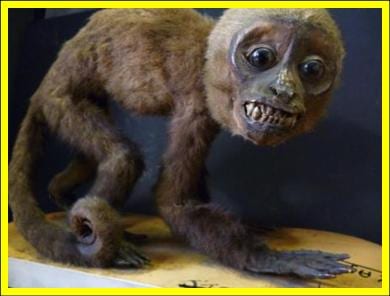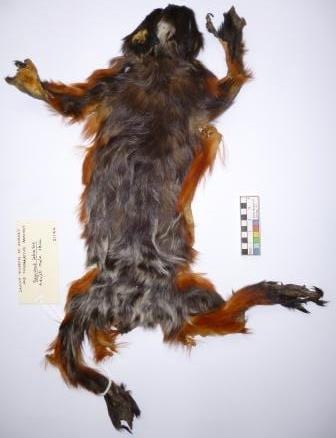Specimen of the Week: WEEK ONE HUNDRED- WOOOO
By Emma-Louise Nicholls, on 9 September 2013
 It’s here! The one hundredth Specimen of the Week! It would be arrogant to assume that you are all loyal followers (though I would question your judgement if you are not) so here is how I chose the top ten specimens for the count-down to the one hundredth Specimen of the Week:
It’s here! The one hundredth Specimen of the Week! It would be arrogant to assume that you are all loyal followers (though I would question your judgement if you are not) so here is how I chose the top ten specimens for the count-down to the one hundredth Specimen of the Week:
1) It must not be on permanent display, giving you a little behind-the-scenes magic, if you will, as the specimen will then go on display for the week of which it has been named ‘Specimen’. Oh yes. That’s almost as good as our exhibition It Came From The Stores. Almost.
2) It must have at some point in the past made me say ‘woooo’ out loud (given my childlike disposition for expressing wonderment at the world at large, this is not necessarily a hard qualification for the specimen to achieve)
3) I must know (at least in a vague sort of a way) what species the specimen is, as SotW is researched and written within a strict one hour time frame.
I know, I know, you just want to know what it is. Ok, here we go, hold on to your seats, this week’s Specimen of the Week is…

The red-chested white-moustached
rather-flat tamarin (Saguinus labiatus)
at the Grant Museum of Zoology.
LDUCZ-Z1194
**The red-chested moustached tamarin skin**
1) The red-chested moustached tamarin is a spectacularly descriptive common name for a tamarin that has a red belly and an elongate patch of white fur and skin on its upper lip (plus the lower lip and nose, but that ruins the name slightly). There are three subspecies of this delightfully ‘pretty’ animal, all of which look… well… the same. Even the boys and girls look the same (monomorphic). Apart from their red tummies and white mouths, their fur is black with stylish white-grey highlights on the lower portion of the back. The ears are bent over along the top, giving them a delightfully impish appearance, especially given their propensity for cocking their heads to listen to noises. I imagine to be friends with one in real life would be to constantly feel slightly mocked.
2) The three subspecies are named after people; Thomas’, Gray’s, and Geoffroy’s, and they all live in South America. Goeffroy and Gray have cross-over ranges in Brazil, though Geoffroy alone has a range that extends down over the border to Peru and Bolivia. Thomas prefers a little peace and quiet from close kin, and lives a little further north in Brazil than the others, with no adjoining territory to the other subspecies. All subspecies prefer to dwell in primary or secondary rainforest. Although they are found on occasion in forest areas that flood seasonally, they will only visit when the area is dry.

What a lovely moustache. Image taken by
Nils Axel Braathen. Image obtained from
commons.wikimedia.org
3) Tamarins, along with marmosets, are grouped together based upon three rather unrelated characters, which by the way is a perfectly acceptable way of grouping things. We scientists don’t just make stuff up. (Clears throat). They are 1- modified claws rather than the more commonly seen human-like nails on the hands and feet of primate species. These are lacking on the big toe, fyi. 2- They have two, rather than the normal three, molar teeth on either side, and 3- They have twins. Whilst you may argue that many humans have twins, the point is made based on whatever the norm for that species is. Humans normally have one baby. Tamarins and marmosets normally have two.
4) The red-chested moustached tamarin is a very non fussy omnivore. They like fruit, flowers, nectar, sticky things that come out of plants such as gum, sap, and latex, plus more meaty things such as frogs, snails, lizards, spiders and insects. Unlike the lucky old marmosets who’s teeth provide the means to gouge trees, thus stimulating the flow of gum, tamarins do not. Sad monkey face. They have to make do with waiting until these sticky delicacies become available to them without their influence.
5) Tamarins are tiny. This species weighs little more than 500 g, the males around 40 g less than the females. For protection therefore they have developed a ‘the more eyes the better’ mentality and subsequently regularly live in mixed-species groups. They normally form an alliance with the smaller saddleback tamarin but those in Bolivia (Geoffroy’s, in case you had forgotten) have also been seen hanging out in groups with the Goeldi’s marmoset. Between four and 15 red-chested moustached tamarins can form a unit, though usually it is between two and eight. Within this group, there tends to be only one breeding female per season. Whether they fight for this right each year or have a rota, I’m not sure.
Emma-Louise Nicholls is the Museum Assistant at the Grant Museum of Zoology
 Close
Close


